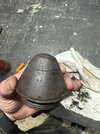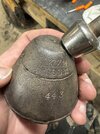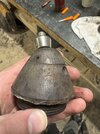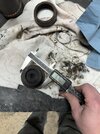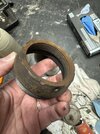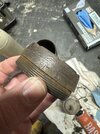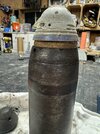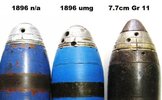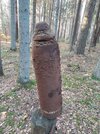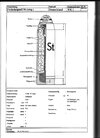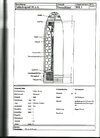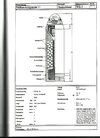HoldThePickle24
Active Member
Hi folks. I have had this 77m shell for a few years now and it never looked right, as you can see. 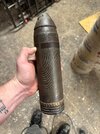
I recently soaked it kroil for quite a while and was able to get the fuze off finally, as well as the adapter.
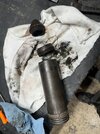
I’ve been diving into the thing the last few days and have identified the shells as a their “universal shell”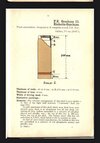
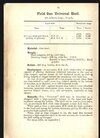
So it turns out the shell used the KZ 11 fuze and the one fitted in mine was a KZ 14. So I guess it’s not really a “mystery”, but does anyone know if this combo was actually used, or is this just a complete mismatch? Both fuzes have the same thread diameter and apparently fit the same adapter fine. Being that the fuze is all steel, it leads me to think it may have been from later in the war when resources were getting tight for Germany. I’m wondering if they may have fitted the fuze in this shell if that’s what they had available or something. I’d like to confirm that though, rather than just making stuff up or assuming.

I recently soaked it kroil for quite a while and was able to get the fuze off finally, as well as the adapter.

I’ve been diving into the thing the last few days and have identified the shells as a their “universal shell”


So it turns out the shell used the KZ 11 fuze and the one fitted in mine was a KZ 14. So I guess it’s not really a “mystery”, but does anyone know if this combo was actually used, or is this just a complete mismatch? Both fuzes have the same thread diameter and apparently fit the same adapter fine. Being that the fuze is all steel, it leads me to think it may have been from later in the war when resources were getting tight for Germany. I’m wondering if they may have fitted the fuze in this shell if that’s what they had available or something. I’d like to confirm that though, rather than just making stuff up or assuming.

